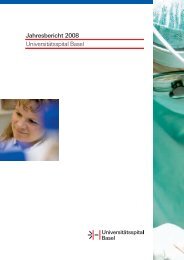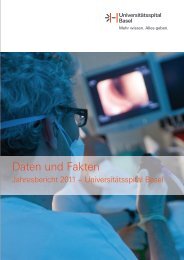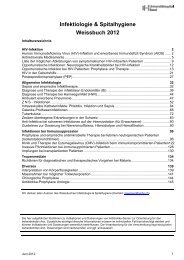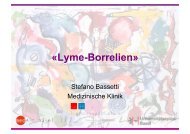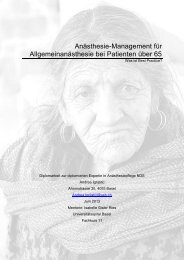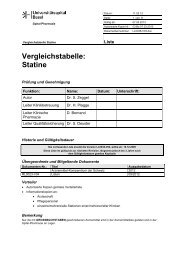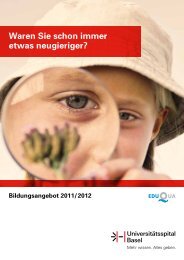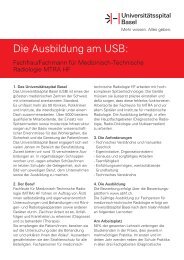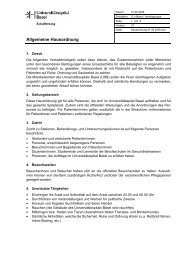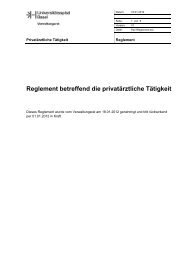Transmucosal Nasal Drug Delivery: Systemic Bioavailability of ...
Transmucosal Nasal Drug Delivery: Systemic Bioavailability of ...
Transmucosal Nasal Drug Delivery: Systemic Bioavailability of ...
You also want an ePaper? Increase the reach of your titles
YUMPU automatically turns print PDFs into web optimized ePapers that Google loves.
7. Project III: <strong>Transmucosal</strong> nasal delivery <strong>of</strong> low-dose midazolam – evaluation <strong>of</strong> two preparations for procedural anxiolysis<br />
7 Project III: <strong>Transmucosal</strong> nasal delivery <strong>of</strong> low-dose<br />
midazolam – evaluation <strong>of</strong> two preparations for<br />
procedural anxiolysis<br />
7.1 Introduction<br />
During MRI (magnet resonance imaging) examinations up to 30% <strong>of</strong> patients experience moderate<br />
to severe anxiety and 10% <strong>of</strong> al MRI examinations cannot successfully be completed because <strong>of</strong><br />
claustrophobia [Münte Sinikka 2002].<br />
For radiological investigations anxiolysis usually is provided by oral or intravenous application <strong>of</strong><br />
benzodiazepines (e.g., lorazepam or midazolam). Claustrophobic patients who are afraid or even<br />
panic before or during MRI examination pr<strong>of</strong>it from conscious sedation, which helps them to cope<br />
with the situation in the narrow MRI tunnel. Conscious sedation refers to anxiolysis and only slight<br />
sedation, not impairing patient’s ability to maintain his airways and to respond appropriately to<br />
physical stimulation and verbal commands [Merrick and Ramsby 1994]. This is required for<br />
procedural anxiolysis during MRI examinations because some examinations require the<br />
cooperation <strong>of</strong> the patients (e.g., in- and exhaling on command). <strong>Nasal</strong> application <strong>of</strong> low-dose<br />
midazolam has been reported to be effective in procedural anxiolysis (conscious sedation),<br />
furthermore the rapid onset is considered beneficial for MRI workflow [Moss, et al. 1993; Münte<br />
2002]. Compared to oral application <strong>of</strong> 7.5 mg midazolam, the benefit <strong>of</strong> nasal delivered low-dose<br />
midazolam (1-2 mg) was faster onset <strong>of</strong> anxiolysis and the absence <strong>of</strong> deep sedation. Therefore,<br />
patients were able to follow the instructions during MRI examinations [Tschirch, et al. 2006]. For<br />
nasal application <strong>of</strong> low-dose midazolam, no preparation is commercially available. Usually,<br />
midazolam formulations for i.v. application are administered nasally or local Hospital Pharmacy<br />
provides nasal midazolam preparations according to the monograph <strong>of</strong> NRF [NRF 2002].<br />
The aim <strong>of</strong> this multicenter trial was to compare the benefit <strong>of</strong> two different preparations for nasal<br />
delivery <strong>of</strong> low-dose midazolam to provide procedural anxiolysis during MRI examinations.<br />
7.2 Methods<br />
The ethics committees <strong>of</strong> Zurich and Basel and the national authorities (Swissmedic) approved the<br />
clinical protocol <strong>of</strong> this multicenter trial, that was carried out at Center A (Institute <strong>of</strong> Diagnostic<br />
Radiology, University Hospital Zurich), Center B (Institute <strong>of</strong> Radiology, Kantonsspital Winterthur),<br />
Center C (Imamed Radiologie Nordwest, Basel), and Center D (Department <strong>of</strong> Radiology,<br />
Orthopedic University Hospital Balgrist, Zurich). Coordination and monitoring was performed in<br />
collaboration with Akroswiss AG, Zurich.<br />
Katja Suter-Zimmermann Page 83 <strong>of</strong> 188 University <strong>of</strong> Basel, 2008




